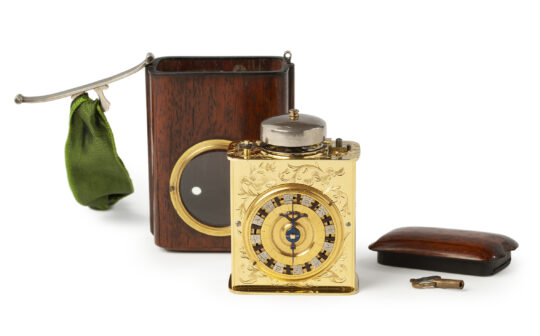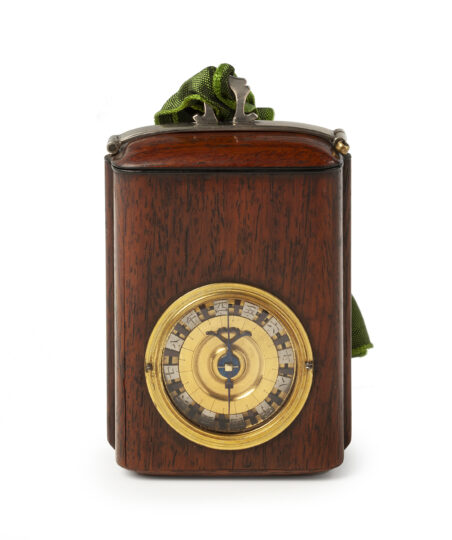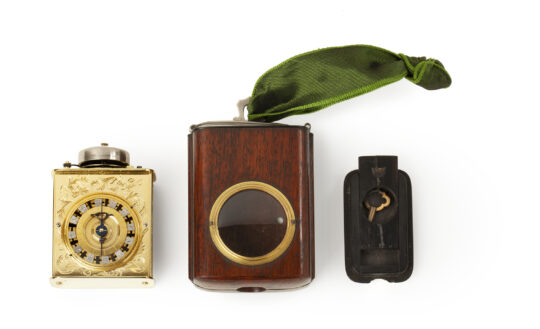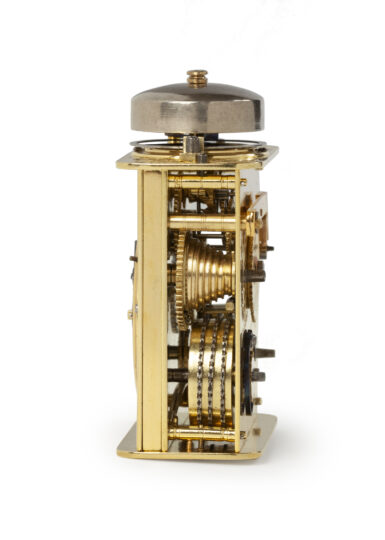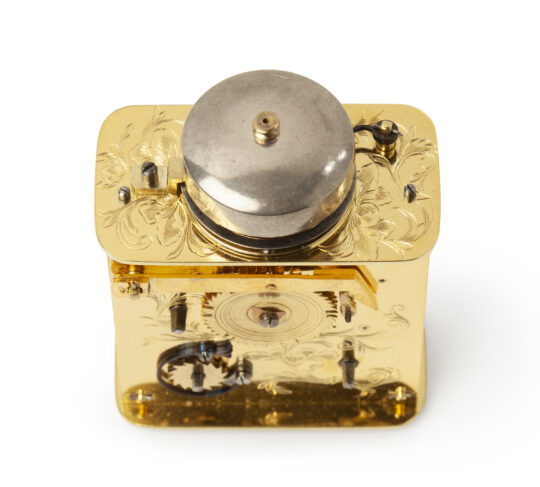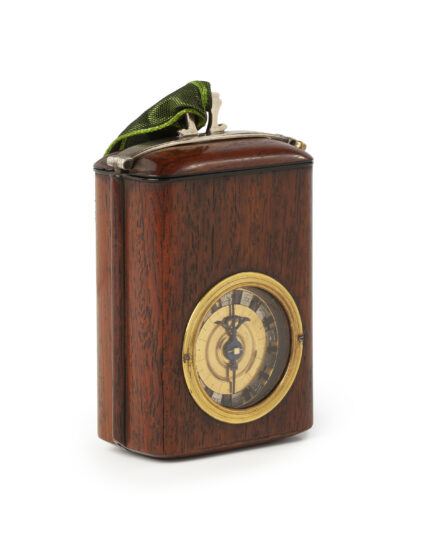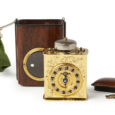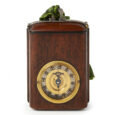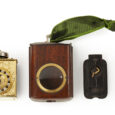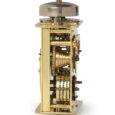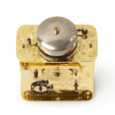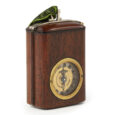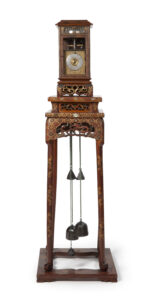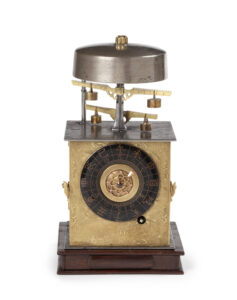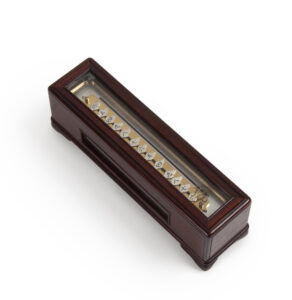JAPANESE ‘INRO TOKEI’ with striking Ca. 1830
M&R266
JAPANESE ‘INRO TOKEI’ WITH STRIKING
Circa 1830
Japan
Movement
The rectangular spring-driven gilt brass movement consists of going and striking trains. The going train has a chain fusee, verge escapement and a vertical balance. The balance cock is beautifully pierced and engraved, showing floral motifs. The movement has Japanese striking (9-4). The clock is wound from the back, which is delicately engraved in scroll, leaf and floral motifs.
Dial
The gilt brass dial plate is embellished by engraved leaf and floral motifs and has a chapter ring below the middle, with twelve sliding, silvered hour plates to indicate the time. Each plate has an engraved Japanese hour characteristic, six for the day hours and six for the night hours. A Japanese hour equals two European hours and runs from 9 to 4. In the centre is a ring with half-hour divisions. The time is indicated by a single fixed delicately pierced blued-steel hour hand.
Case
The movement is situated in a case, the inro, made of shitan, Japanese rose wood. In the front is a circular aperture, with a convex glass, through which the dial is visible. There is a cover in the top with a brass catch, which can be unlocked by removing a pin and opened. The cover incorporates a small drawer for the winding key.
Duration one day
Height 7.5 cm.
Width 6 cm.
Depth 3.3 cm.
Literature
– A similar clock is depicted in Bonhams, ‘The John Read Collection of Fine Antique Japanese Timekeepers’, p. 29.
– N.H.N. Mody, Japanese clocks.
– W. Brandes, Alte Japanische Uhren.
Japanese time measurement
Japanese time measurement is very different from its counterpart in the Western world. Instead of a fixed value for an hour the length of an hour in Japan, called toki is variable depending on the length of the day and night. Day and night are both divided into six toki, which cover the periods from sunrise to sunset and from sunset to sunrise. In summer the days are longer than the nights and consequently a day toki last longer than a night toki. In winter it is the other way around. This is the reason why Japanese clocks have sliding chapters to adjust the length of a toki. There are also clocks with a fixed chapter ring and a revolving hand. To regulate the lengths of the toki the weights on the foliot can be moved, which makes the clock go faster or slower. This is mainly found in older clocks. The hour numerals run from nine to four, the latter being midday. Number nine was holy in Japan. Each toki, twelve in total, also had its own sign of the zodiac, which were sometimes indicated on a ring around the chapter ring. This is mainly found in older clocks. The hour numerals run from nine to four, the latter being midday. Japanese clocks indicate how many hours there are to come (5 is followed by 4), whilst European clocks indicate how many hours have passed (5 is followed by 6). In Japan the figure 9 was holy. Each toki, twelve in total, also had its own sign of the zodiac, which were sometimes indicated on a ring around the chapter ring.

